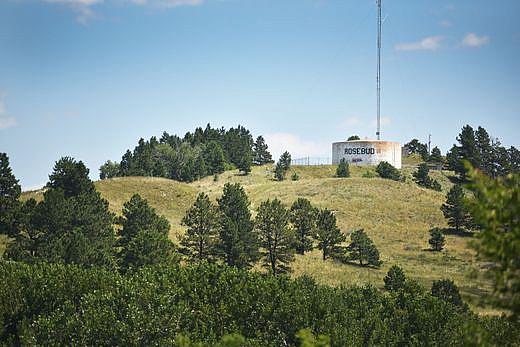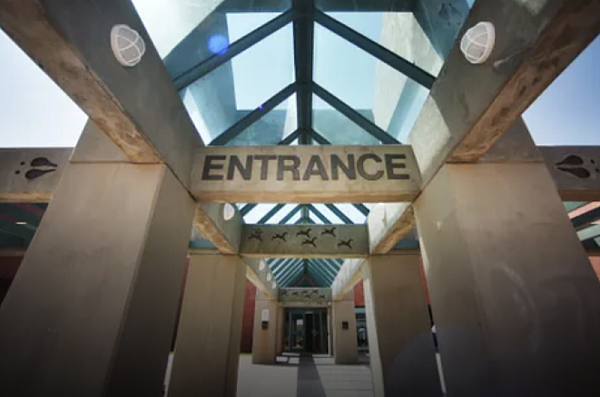Violated: Inside South Dakota's Native American health care crisis
This story was produced as part of a larger project led by Dana Ferguson, a participant in the 2018 National Fellowship.
Other stories in this series include:
Violated: Negligent care costs patients time, money and limbs at Indian Health Service hospitals
House committee demands answers from IHS, cites Argus Leader reporting
Violated: How the Indian Health Service betrays patient trust and treaties in the Great Plains

Rosebud reservation Tuesday, July 31, in Rosebud.
Briana Sanchez / Argus Leader
Before South Dakota became a state, its original inhabitants were offered a promise.
Trade tribal land and natural resources to white settlers in exchange for the guarantee of housing, education and health care.
Under duress, they agreed.
But the federal government did little to uphold its end of the treaty agreement. From the start, funding for the health programs was inadequate and largely focused on preventing the spread of infectious disease.
Health consequences of assimilation
The first doctors to offer medical care to Native Americans through the Bureau of Indian Affairs were underpaid, and the services they were able to offer were limited because they didn’t have the funds or supplies they needed, wrote David H. DeJong, a Native American policy expert and author of "Plagues, Politics, and Policy: A Chronicle of the Indian Health Service, 1955-2008."
In the late 19th century, medical care was again lacking as the U.S. focused on eradicating Native American people from land in the west, DeJong wrote. And westward expansion made that worse.
The move to push tribes onto reservations came with health consequences. Traditional diets were harder to access, which meant people couldn’t hunt or gather traditional foods or ingredients for medicines.
That stemmed modern-day problems including higher rates of diabetes, cancer and heart disease among Native Americans.
Moves to force assimilation among children in BIA boarding schools also spurred a legacy of physical, emotional and sexual abuse, as well as lasting historical trauma.
For more than a century, the political pendulum has swung back and forth between Native American assimilation and self-governance policy, resulting in small gains that tended to be rolled back.
In 1955, the federal government turned over the responsibility for providing Native American health care to the Indian Health Service. Health experts agree that the agency has never been fully funded.
“Congress has been in breach of contract for decades,” said Donald Warne, chair of the Department of Public Health at North Dakota State University. “They have not fully funded IHS, and they know it.”
The American Indian Movement of the 1960s and 1970s helped shift policy focus toward self-determination for tribes. That meant tribes could start entering into contracts or compacts with the U.S Department of Health and Human Services to plan or administer their own programs, including health care.
Since then, several tribes have taken over their own care, bypassing IHS. Sixty percent of IHS’ appropriation from Congress has been administered by tribes through the contracts.
But not all have been eager to go out on their own. The Rosebud Sioux and Oglala Sioux tribes have weighed taking over their hospitals in rural South Dakota, but they haven’t sustained support for the move.
Meanwhile, problems persist for both the Rosebud and Pine Ridge IHS hospitals. In Rosebud, conditions got so bad the hospital was forced to shutter its emergency room for seven months in 2016. Several patients died in the backs of ambulances as they were rushed to the next-nearest hospital 45 miles away.
Hospitals putting patients at risk
Two years later, conditions at the hospital don’t appear to have markedly improved.
Earlier this year, Rosebud IHS hospital was put on “immediate jeopardy” status. A federal inspection released in August detailed the shortcomings that put patients at risk. A 12-year-old girl tried to hang herself while left unsupervised, and the next day, a 35-year-old man died of a heart attack after hospital guards pepper-sprayed him and restrained him.
A follow-up review uncovered additional problems: doctors and patients became ill after they were exposed to mold growing on hospital walls, and doctors risked spreading infectious diseases when they failed to properly sanitize blood sugar monitors.

The hospital avoided losing federal funding by correcting the deficiencies, according to Centers for Medicare and Medicaid Services reports, but tribal members and the state's elected officials question whether the improvements will last the test of time.
Sen. John Thune, R-S.D., said he was disappointed at the lack of meaningful change at the Rosebud hospital.
“CMS has repeatedly reiterated that its conditions of participation, which all hospitals are required to meet, is the floor for acceptability, not the ceiling,” Thune said in a statement. “And it’s alarming the hospital found itself in this position again. While the facility is now in compliance, there is certainly still room for improvement.”
In Pine Ridge, the IHS hospital serving the Oglala Sioux tribe lost its ability to bill to Medicare in November 2017 after inspections there found repeated misdiagnoses and improper care. In the case that CMS inspectors said tipped the scales, doctors triaged a diabetic man in the wrong priority level, delaying critical medical screening and treatment. The man was transferred to another hospital and died there a day later.
James Driving Hawk, Great Plains Area IHS acting director, said new permanent leadership teams were put in place at the Rosebud and Pine Ridge hospitals, and processes were established to more quickly report and address problems.
He said the Pine Ridge hospital was working to meet standards set by CMS to regain its ability to bill to Medicare. There were a few steps left, Driving Hawk said, but he anticipated the hospital would submit its application in early 2019.
“There are some things that we need to address to make sure we’re 100 percent compliant,” Driving Hawk said.
[This story was originally published by the Argus Leader.]

